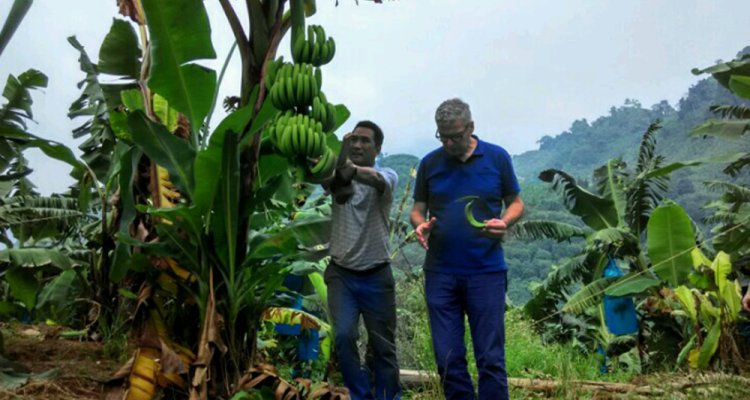
News
First report of Panama disease in Cavendish bananas caused by TR4 in Colombia
An international research team has scientifically confirmed the presence of the fungus Fusarium Tropical Race 4 (TR4) in Cavendish banana plants in Colombia. TR4 is the cause of Fusarium wilt, also known as Panama disease. The findings are published in an open source article in the journal Plant Disease.
The publication is an official confirmation that this devastating banana disease has reached South America, a region where banana is very important crop both economically and socially. The fungus reached the region despite major efforts by governments and the banana community to prevent the spreading of the disease to South America, reflecting the fact that TR4 is an imminent threat not only to Colombia but the entire region.
The threat of TR4
The Cavendish banana variety which dominates the world market is very susceptible to TR4, which is a soil-borne disease. As soil cannot be used for Cavendish-banana cultivation for more than twenty years once infected, measures have been taken to avoid the fungus spreading as much as possible. TR4 has already been destroying enormous amounts of banana crops and banana farms in Asia and Australia for decades.
TR4 has now been identified for the first time in South America, an important banana-producing region. Due to the economic and social importance of this development, Colombia declared a national emergency on 8 August after laboratory results confirmed the presence of the fungus within its borders. The Colombia Agricultural Institute (ICA), a federal agency tasked with overseeing agricultural health in the country, says that about 175 hectares of farmland have been affected so far.
Diagnostic research
In June 2019 the first TR4 symptoms were found in two banana farms in the department of Guajira in the northeast of Colombia. After the initial suspicions were reported, the Colombian government initiated and carried out a thorough analysis of the farms involved. The initial diagnostic involved three different DNA tests on random samples from the plant tissue of suspicious plants. The results indicated that the farms could be infected with TR4.
To confirm these findings, additional tests were carried out in the Netherlands – at Utrecht University, Wageningen University & Research and KeyGene. This research involved both DNA analysis and pathogenicity assays. DNA-sequencing confirmed that the Colombian isolates under investigation belong to what has been previously defined as the Fusarium odoratissimum TR4 lineage.
In the pathogenicity tests, Cavendish plants were inoculated with three Colombian isolates selected from the samples. The strains all caused the well-known external and internal symptoms of TR4 in Cavendish. Plant tissue samples were then taken and confirmed that the used isolates were present in the diseased plant tissue. Collectively, these analyses provided final proof that TR4 has indeed reached Colombia.
Team effort
The team from the Netherlands publishing the paper in Plant Disease consisted of scientists from Utrecht University (Michael Seidl & Tom Schermer), Wageningen University & Research (Gert Kema, & Carolina Aguilera-Galvez), KeyGene (first author Fernando Garcia-Bastidas, Alexander Wittenberg, Rene Hofstede, & Anker Sørensen) and ClearDetections (Marta Santos-Paiva).
From Colombia, the ICA team comprised Catalina Quintero-Vargas, Mariluz Ayala-Vasquez & Anna Maria Noguera.
The authors would like to thank all those who made a valuable contribution to the research and the scientific publication, as well as the government officials involved. They are also grateful to the team of specialists at the Colombian Agriculture and Livestock Institute, ICA-National headquarters and the diagnostics laboratory, especially Anamaría García, Walther Turizo, Emilio Arévalo, Jorge Palacino, Jaime Cárdenas, Alejandra Castro, Oscar Dix, Carlos Andrés Palacio and Deyanira Barrero. Cor Schoen and Yvonne Griekspoor of Wageningen University & Research actively worked with the LAMP diagnostic to streamline sample analyses.